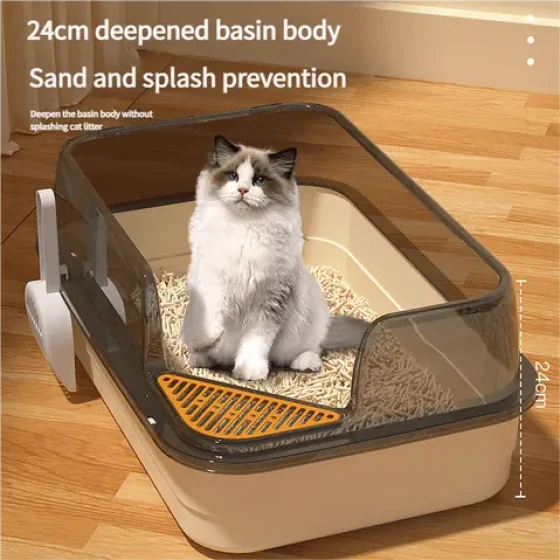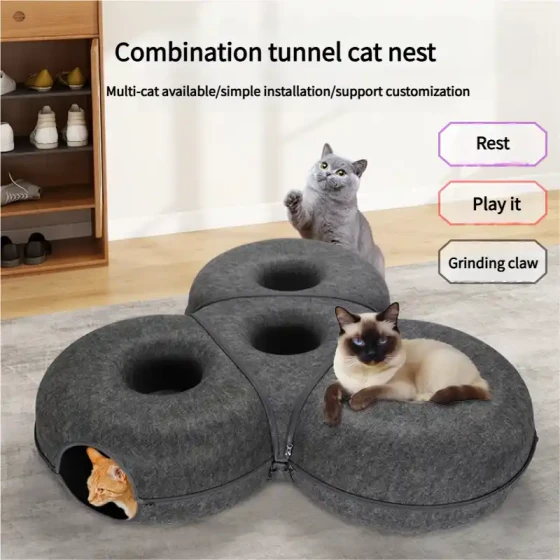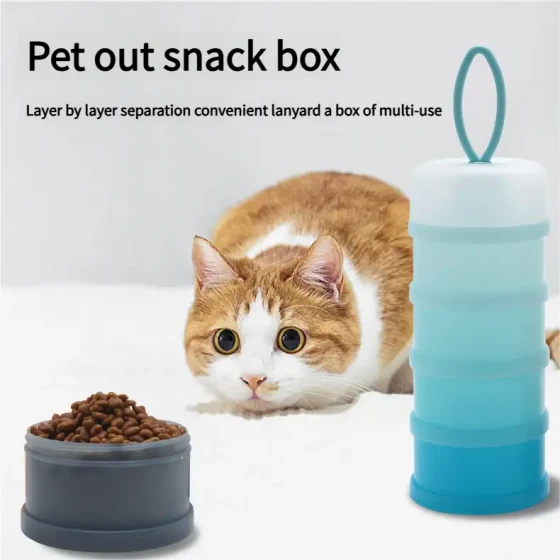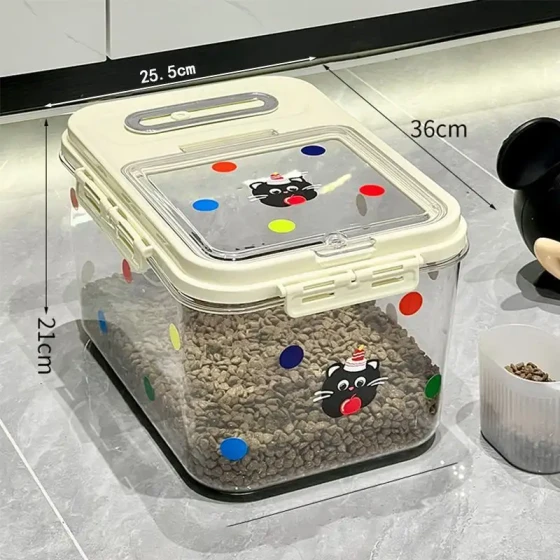Taboos for New Cat Owners_11 Common Misconceptions New Owners Must See
Many people are filled with joy and anticipation when welcoming their first cat in life, but cats are not "low-maintenance" pets; they have unique habits and needs. For new cat owners, understanding and avoiding some common raising misconceptions is crucial, which not only can make your cat healthier and happier but also make your human-pet relationship more harmonious. Below are the 11 most common taboos and misconceptions during the process of raising cats for beginners, hoping to help you avoid detours and become a qualified cat guardian.
11 Common Mistakes for New Cat Owners Must See
For first-time cat owners, common misconceptions include thinking cats do not need much companionship, only need cat food and water, neglecting the importance of vaccines and deworming, not understanding cat body language, and failing to prepare home safety measures. These misunderstandings may lead to health problems, abnormal behavior, or even threaten the cat's life safety. Knowing these potential traps and adopting correct care methods is the key first step to ensuring your cat's health, safety, and happiness.
1. Thinking cats naturally drink water, ignoring the importance of hydration
Misconception: Cats inherited from their ancestors the habit of obtaining most water through food and are insensitive to thirst. Many beginners think just providing a water bowl is enough.
Taboo: Providing only one ordinary water bowl or placing the water bowl in a poor location (e.g., next to the litter box) may cause the cat to drink insufficiently. Long-term dehydration can lead to urinary system diseases, such as urinary stones, cystitis, etc.
Correct approach: Provide multiple drinking points and try different materials and shapes of water bowls, such as ceramic or stainless steel. Some cats prefer running water, so consider using a pet water fountain. Place water bowls away from litter boxes and food bowls.
2. Ignoring cats' need for vertical space
Misconception: Believing cats only need ground-level activity space.
Taboo: Not providing enough space for climbing, jumping, and resting at heights. Cats naturally like to observe the environment from high places, which makes them feel safe and comfortable.
Correct approach: Invest in a suitable cat tree or install cat shelves and elevated cat nests on walls. Providing vertical space greatly enriches cats' lives and reduces stress and anxiety.
3. Only feeding single, low-quality cat food
Misconception: Thinking all cat food is about the same, just buying based on price.
Taboo: Long-term feeding of nutritionally unbalanced or poor-quality cat food may cause malnutrition, dry fur, decreased immunity, and various diseases.
Correct approach: Choose cat food that meets AAFCO (Association of American Feed Control Officials) or NRC (National Research Council) standards, with clear ingredients and a reputable brand. Consult a vet or experienced cat owners to select appropriate food based on the cat's age and health. You can also add wet food to increase moisture intake.
4. Neglecting regular checkups and vaccination/deworming
Misconception: Assuming cats raised at home won’t get sick or only taking them to the vet when sick.
Taboo: Not taking cats for annual checkups, vaccinations, and internal/external deworming on time. Vaccines prevent many fatal infectious diseases; deworming protects cats from parasites.
Correct approach: Follow the vet's advice strictly to complete basic vaccinations, with annual boosters. Deworm regularly, even indoor cats can get parasites from the environment or owners.
5. Careless about litter box setup and cleanliness
Misconception: One litter box is enough and cleaning it every few days.
Taboo: Cats are very clean animals and have high standards for litter boxes. Insufficient number, too small, poor location (busy areas), or unclean litter boxes may cause cats to refuse to use them and urinate or defecate elsewhere.
Correct approach: The number of litter boxes should be "number of cats + 1." Scoop waste at least once daily. Thoroughly clean litter boxes and replace litter regularly. Choose litter types and depths that cats prefer.
6. Not understanding cat body language and behavioral signals
Misconception: Trying to interpret cats’ behavior using dog or human logic.
Taboo: Failing to recognize cats’ stress, anxiety, fear, or discomfort signals (such as airplane ears, piloerection, hissing, rapid tail flicks), misunderstanding their intentions, which may cause injuries or worsen negative emotions.
Correct approach: Spend time learning common cat body language and vocal meanings. Understand cats express friendliness and trust by rubbing, slow blinking, and purring. Respect cats’ desire for solitude; do not forcibly hug or interact.
7. Not securing home safety measures
Misconception: Thinking home is safe for cats.
Taboo: Not securing toxic plants (such as lilies, ivy), medicines, cleaning agents, small objects (like needles, rubber bands). Leaving windows and balconies open poses a risk of falls (“high-rise syndrome”).
Correct approach: Carefully check all potentially dangerous items and store or remove them properly. Install screens or protective nets to ensure cats enjoy sunlight and fresh air safely.
8. Thinking cats do not need play and interaction
Misconception: Believing cats are independent and can play by themselves.
Taboo: Lack of interaction and playtime with owners causes boredom, depression, and behavioral issues like furniture destruction or excessive licking.
Correct approach: Spend daily time playing with cats using toys like teaser wands, laser pointers (avoid only chasing the light), and realistic toys. Play helps burn energy, satisfies hunting instincts, and strengthens your bond.
9. Using toxic cleaning agents or aromatherapy around cats
Misconception: Using common household cleaners or air fresheners.
Taboo: Many human-use cleaning agents (especially phenol-containing), disinfectants, essential oils, scented candles, etc., are toxic to cats. Cats lick their fur and can ingest toxic residues on surfaces.
Correct approach: Use pet-specific cleaners or natural, non-toxic cleaning methods (like baking soda or diluted vinegar). Avoid essential oils and aromatherapy products indoors.
10. Forcing cats to bathe or trim nails
Misconception: Thinking cats require frequent baths or using forceful methods for grooming.
Taboo: Most cats dislike baths; frequent bathing destroys natural skin oils. Forcing baths or nail trims causes great stress and fear, may lead to scratching, biting, and breaks trust.
Correct approach: Unless cats are particularly dirty or have skin conditions, frequent baths are unnecessary, as cats clean themselves. For bathing, proceed gradually using pet shampoo and suitable water temperature. Trim nails patiently, clipping little at a time, rewarding good behavior. If unable, ask groomers or vets for help.
11. Ignoring cats' dental health
Misconception: Thinking cats' teeth do not require care.
Taboo: Long-term neglect of dental cleaning leads to plaque and tartar buildup, causing gingivitis, periodontal disease, and affecting eating and overall health.
Correct approach: Begin brushing cats’ teeth from a young age, using pet-specific toothpaste and toothbrush. If cats resist, consider dental treats, dental water additives, or regular professional dental cleanings.
Frequently Asked Questions
- What should new cat owners prepare?
At minimum, prepare cat food, food and water bowls, litter, litter boxes, scratching boards, cat beds, transport carriers, and some toys. Later vaccinations, deworming, and treats are also needed. - How to choose cat food?
Choose cat food where the first ingredient is meat and contains minimal grains or artificial additives. Refer to AAFCO or NRC standards, selecting food suitable for the cat's life stage (kitten, adult, senior) and special needs (neutered, sensitive stomach). Start with small packs for trial. - Why does my cat keep meowing?
Cats meow for various reasons like hunger, thirst, wanting to play, seeking attention, boredom, fear, comfort, or illness. Observe other behaviors and environment to determine the cause. - Is it normal for cats to vomit?
Occasional hairball vomiting is normal. Frequent vomiting, vomiting food, lethargy, or other symptoms (diarrhea, loss of appetite) may indicate health issues requiring veterinary care. - How often should cats be bathed?
Healthy indoor cats usually do not need frequent baths as they groom themselves. If very dirty or skin problems, use pet shampoos under vet guidance with water around 37-38°C. Avoid frequent bathing; a few times a year or less is fine.
Summary
Raising cats is a sweet responsibility requiring time, money, and patience. Avoid these common mistakes, learn more about cats, carefully observe their behaviors and health, and communicate with vets promptly. You will better care for your cat and enjoy life together. Remember, each cat is a unique individual; understanding their personalized needs and giving enough love and care will build a deep bond between you and your cat.



